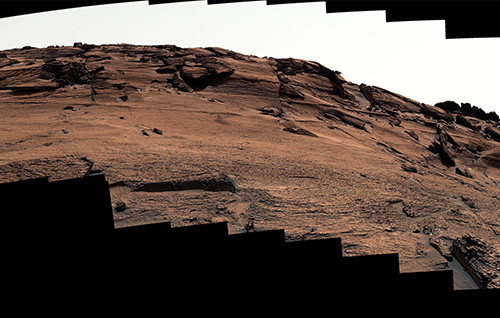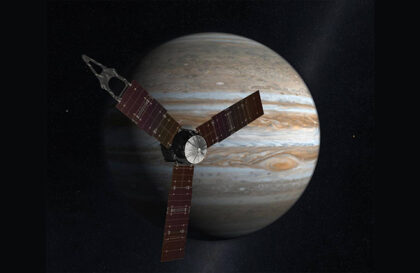‘Dog door’ on Mars discovered by Curiosity rover is a rocky ‘doorway to the ancient past’, NASA says
NASA’s Curiosity rover has been on a mission to explore Mars since landing on the planet in 2012. The rover collected data and images of the planet’s surface, providing valuable information about its geology and history. NASA recently released images taken by the Mars rover that show a crack in the rock that looks like a door. The NASA team called the discovery the “Dog Door,” and it generated significant interest in the scientific community and the public.
The “Dog Door” is located in the East Cliffs of Gale Crater and is only 12 inches (30 centimeters) wide. Although not an actual door, a crack in the rock offers a glimpse into Mars’ ancient past. The crack is believed to have been formed by the movement of water or wind, and may have been the site of a former water source. The discovery of the “Dog Door” has caused excitement among scientists because it offers the potential to reveal new information about the planet’s history and geology.
Credit: NASA/JPL-Caltech/MSSS
NASA quickly reacted to the discovery of the “Dog Door”, calling it “a door to the ancient past”. While the discovery is exciting, NASA cautions against jumping to conclusions about what a crack in the rock might reveal. The team plans to continue analyzing the images and data collected by the Curiosity rover to better understand the Dog Door and its meaning.
Geological significance of “Dog’s door”
A “dog door” on Mars, discovered by NASA’s Curiosity rover, is a geological structure that resembles a small rectangular doorway in a rock.The feature is located in the East Rocks of Gale Crater on Mars, and its geological significance lies in its unique structure. A “dog door” is a crack in the rock that was formed by the erosive forces of wind and dust on the surface of Mars. The fissure is roughly rectangular in shape and appears to have formed as a result of a combination of natural processes and geological activity. This unique feature can be compared to similar geologic formations on Earth, providing insight into the geological history of Mars.
Comparisons have been made between the “Dog’s Door” on Mars and similar geologic formations on Earth, such as the arches found in Utah’s Arches National Park. Both features were formed by the erosive forces of wind and water that slowly eroded the rock over time. The similarity between these features suggests that the geological processes that formed the “Dog Door” on Mars are not unique to the planet and may have also occurred on Earth.
The discovery of ammonia and other compounds in soil samples collected by the Curiosity rover further supports the theory that Mars may once have had a more Earth-like environment, with liquid water and a thicker atmosphere. The “dog door” on Mars offers a glimpse into the planet’s ancient past and provides valuable information about the potential for life on the Red Planet. As NASA continues to explore Mars, it is likely that more discoveries will be made.
The potential of scientific research in “Dog Door”
Credit: NASA / Mars Communications Team at NASA’s Jet Propulsion Laboratory for NASA’s Science Mission Directorate
The Curiosity rover is equipped with various scientific instruments that allow it to conduct a wide range of research on Mars.These instruments include a drill to collect rock samples, a laser spectrometer to analyze the chemical composition of rocks and soil, and a set of cameras to image the Martian surface. The rover’s ability to conduct detailed scientific analysis has already led to numerous discoveries, including the discovery of new compounds in Martian soil.
The crack in the rock is believed to have formed billions of years ago, at a time when Mars was much more geologically active than it is today. By analyzing the composition and structure of the rock, scientists hope to gain a better understanding of the geological processes that shaped the surface of Mars over time. In addition, the “dog door” could provide clues about the planet’s past climate and environmental conditions, which could have implications for the search for life on Mars.
Banner image: NASA/JPL-Caltech/MSSS
Image credit:
https://mars.nasa.gov
https://mars.nasa.gov
https://mars.nasa.gov






